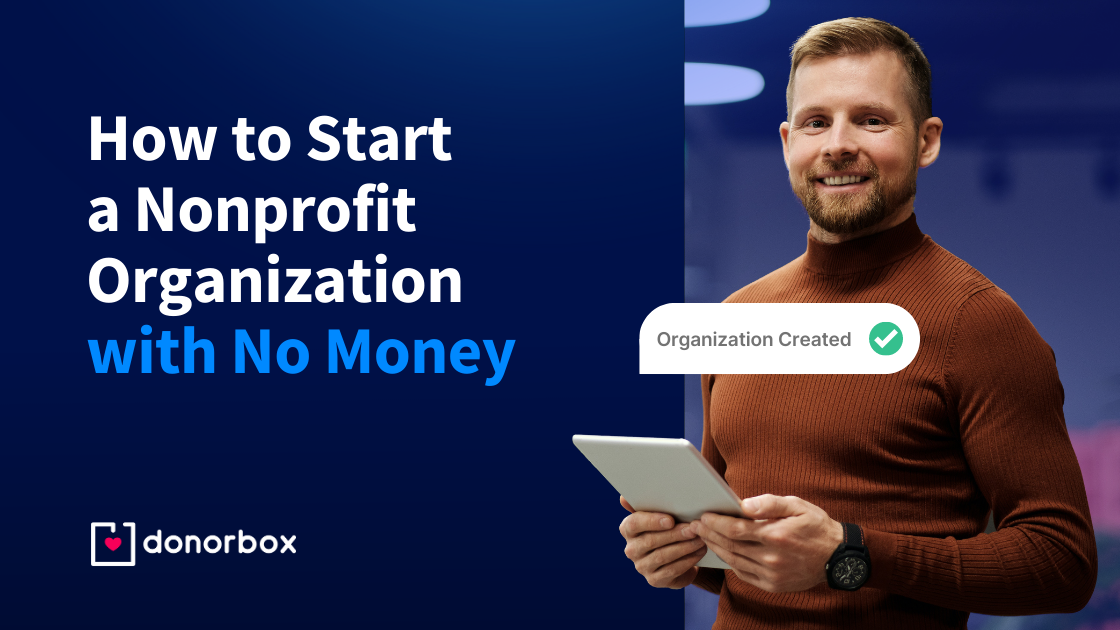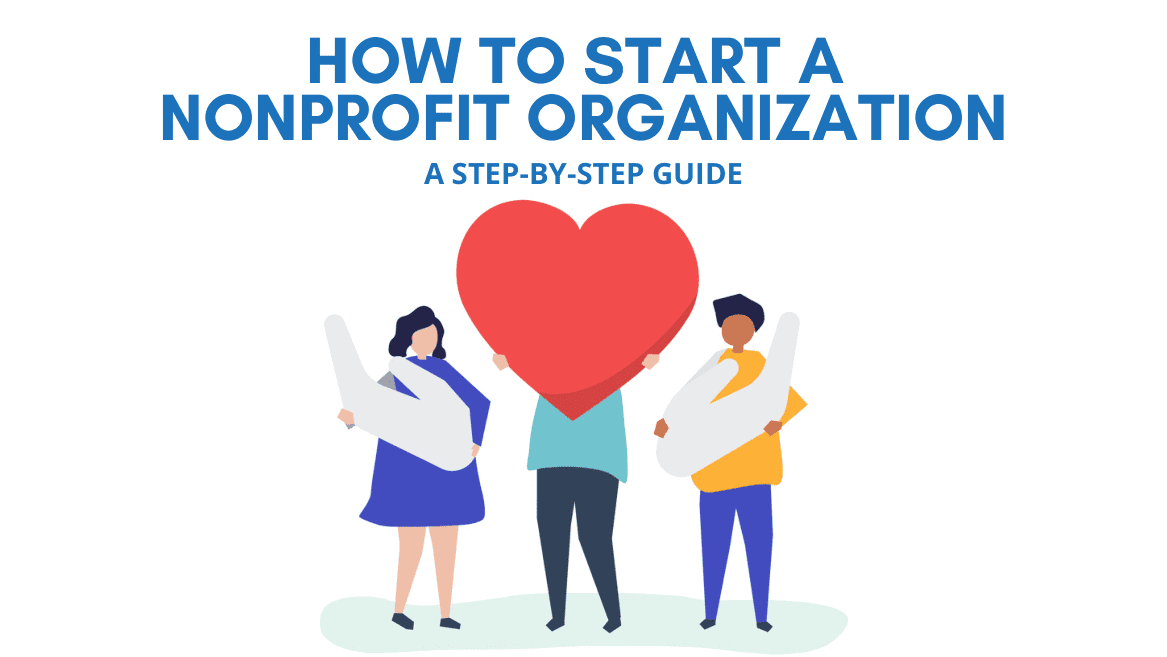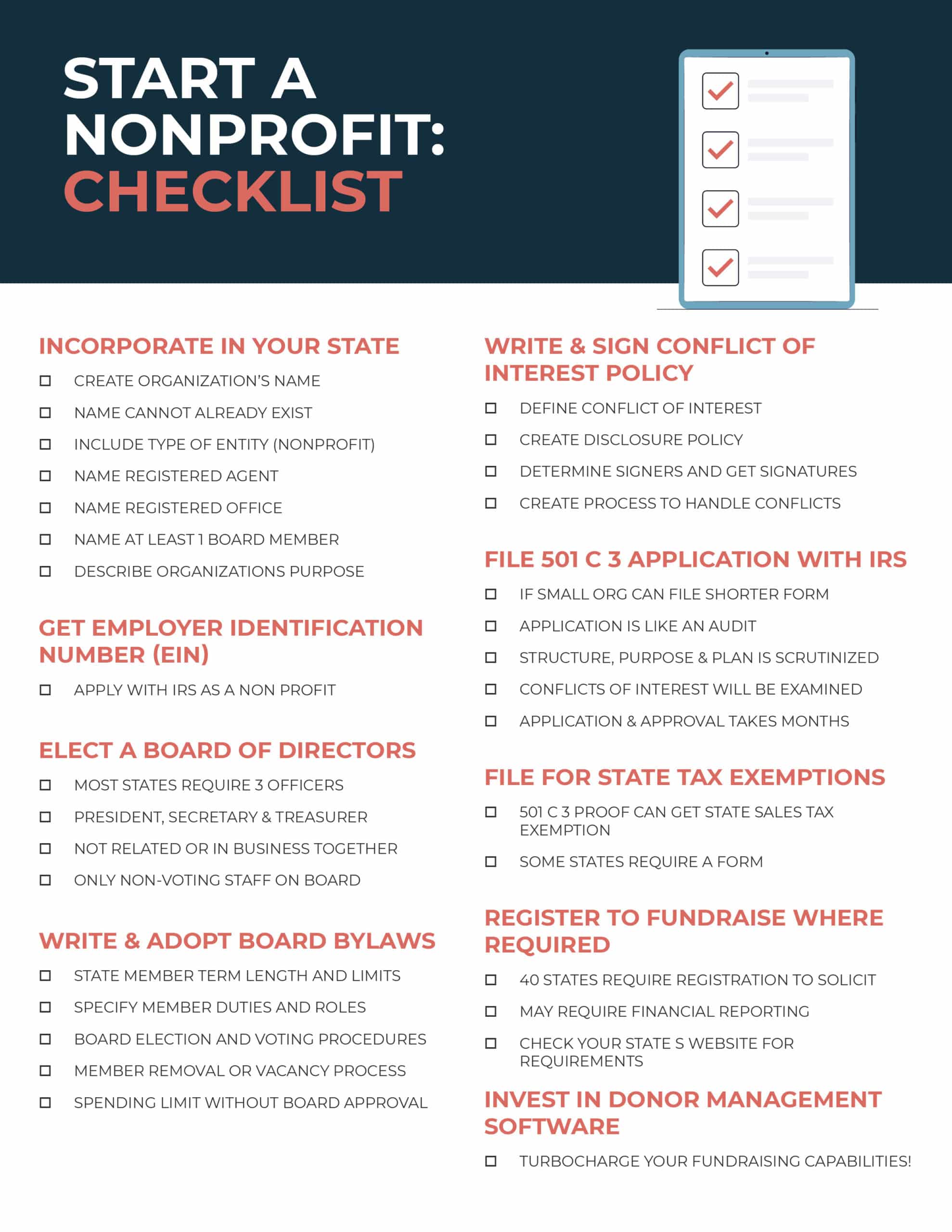To start a non-profit organization, you must follow specific legal and operational procedures. This article provides a step-by-step guide on how to establish a non-profit organization, including registering with the appropriate authorities, developing a mission statement, creating a board of directors, and securing funding through grants and donations.
By following these steps, you can successfully launch your non-profit and make a positive impact in your community. Creating a non-profit organization involves careful planning and execution, so it’s important to understand the process and requirements before getting started. Let’s dive into the details of how to start a non-profit organization.

Credit: donorbox.org
Choosing A Cause
One of the first and most crucial steps in starting a non-profit organization is choosing a cause that aligns with your vision and passion. By selecting a cause that resonates with you, you’ll be motivated to make a real difference in that area. Here are the key steps to consider when choosing a cause:
Identifying An Issue
Identifying an issue involves pinpointing a problem or social challenge that you want to address through your non-profit organization. This issue can be broad, such as poverty or environmental conservation, or it can be more specific, like providing education to underprivileged children or supporting mental health awareness.
To identify an issue effectively, start by reflecting on your personal experiences, values, and areas of expertise. Consider what matters to you and the impact you want to make. Think about the problems you’ve observed in your community or society as a whole, and ask yourself how you can contribute to solving them.
Once you have identified a few potential causes, prioritize them based on their urgency, relevance, and the resources available to address them. This will help you focus on the cause that you are most passionate about and that aligns with your capabilities.
Researching Existing Organizations
Before starting your non-profit organization, it’s important to research and understand existing organizations that are already working on the cause you have chosen. This step will give you valuable insights into the current landscape, potential collaboration opportunities, and any gaps that you can fill.
Begin by conducting a thorough online search to identify the non-profit organizations and initiatives that are already active in your chosen cause. Look for organizations that share similar goals and values. Take note of their strategies, programs, and impact. This information will help you learn from their successes and challenges, and potentially develop a unique approach for your own organization.
In addition to online research, reach out to local community groups, government agencies, and individuals who are involved in the cause. Attend events, conferences, and workshops related to your cause to network and gain valuable insights. By learning from existing organizations, you can avoid duplicating efforts and find opportunities for collaboration that can amplify your impact.
Remember, choosing a cause for your non-profit organization is both a personal and strategic decision. By identifying an issue and researching existing organizations, you’ll be well-equipped to embark on your journey to make a positive and lasting impact.

Credit: donorbox.org
Creating A Mission Statement
Starting a non-profit organization? One essential step is creating a mission statement to define your goals, values, and purpose for making a positive impact in the community. This statement will guide your organization’s activities and attract supporters who align with your vision.
Creating a Mission Statement Defining the Purpose When starting a non-profit organization, it’s crucial to define its purpose through a mission statement. This statement serves as a North Star, guiding the organization’s activities, and conveying its vision to stakeholders. The mission statement should be concise, impactful, and reflective of the organization’s core values and goals. Crafting a Clear Message Crafting a clear message is essential for an effective mission statement. Ensure that it is simple and easily understood by all. Avoid jargon and complex terminology that might confuse your audience. By using straightforward language, you can effectively communicate your organization’s goals and objectives. In addition, it’s crucial to make the mission statement engaging and memorable. Consider using powerful verbs and vivid language that evoke emotion and inspire action. This will help your organization stand out and resonate with potential supporters. Moreover, the mission statement should be specific and focused. Clearly state the target population or cause that your non-profit aims to serve. By doing so, you can attract individuals who are genuinely interested in your organization’s mission and are more likely to support your cause. To ensure clarity, it can be helpful to remain consistent with your organization’s overall branding. Align the tone and style of your mission statement with your website, logo, and other communication materials. Lastly, keep in mind that a mission statement is not set in stone. It can evolve as your organization grows and your goals evolve. Regularly revisit and revise your mission statement to ensure it remains relevant and impactful. By creating a mission statement that clearly defines the purpose and craft a clear, engaging message, your non-profit organization can effectively communicate its cause, attract supporters, and make a lasting impact in the community it serves.Forming A Board Of Directors
One of the most crucial steps in starting a non-profit organization is forming a board of directors. The board plays a vital role in providing guidance, making decisions, and ensuring the organization’s mission is achieved. Assembling a qualified and committed board is essential for the success and sustainability of the non-profit.
Selecting Qualified Individuals
When selecting individuals to serve on the board of directors, it’s important to find people who possess the necessary skills, expertise, and passion for the cause. Look for individuals who have experience in areas such as fundraising, finance, marketing, or legal matters. Recruiting individuals who are knowledgeable about the field your non-profit operates in can bring valuable insights and connections.
- Identify potential candidates who align with your non-profit’s mission and values.
- Consider individuals with diverse backgrounds and perspectives to bring a range of expertise.
- Seek out individuals who have a strong network and can contribute to fundraising efforts.
- Look for individuals who have previous experience serving on boards or volunteering for non-profits.
Establishing Roles And Responsibilities
Once the board members are selected, it’s essential to establish clear roles and responsibilities for each member. This ensures that everyone on the board understands their specific duties and can contribute effectively.
Consider creating a table to outline the roles and responsibilities of each board member:
| Position | Responsibilities |
|---|---|
| Chairperson | Leads board meetings, sets agendas, and represents the organization. |
| Treasurer | Oversees financial matters, prepares budgets, and ensures fiscal responsibility. |
| Secretary | Keeps record of board meetings, maintains organizational documents, and handles correspondence. |
| Committee Members | Contribute to specific committees such as fundraising, governance, or strategic planning. |
By clearly defining the roles and responsibilities, the board members can work collaboratively towards achieving the non-profit’s goals. Regular communication and accountability among the members are crucial to maintain the effectiveness of the board.
Forming a qualified board of directors is an essential step in establishing a successful non-profit organization. By selecting individuals who bring diverse skills and expertise, and by clearly defining their roles and responsibilities, the board can provide the leadership needed to fulfill the organization’s mission.
Securing Funding
Securing funding is vital when starting a non-profit organization. Learn effective strategies to attract financial support and ensure the success of your mission.
Exploring Grants And Sponsorships
Securing funding is a crucial step in starting a non-profit organization. It allows you to bring your vision to life and make a positive impact on the community. One of the most effective ways to secure funding is through grants and sponsorships. These are financial contributions given to non-profits by individuals, businesses, or government agencies who believe in your cause.Grants
Grants are funds provided by organizations specifically to support projects or initiatives that align with their mission and values. When exploring grants, it’s important to identify potential grantors that share a common interest in the work your non-profit aims to accomplish. Conduct thorough research to find foundations or government agencies that are known for funding causes similar to yours. When applying for grants, pay attention to their guidelines and requirements. Craft a compelling grant proposal that highlights the significance of your non-profit’s mission, the impact it will have, and the outcomes you aim to achieve. Clearly outline your goals, objectives, and the specific activities you plan to undertake. Make sure to include a detailed budget and a realistic timeline for project implementation.Sponsorships
Sponsorships, on the other hand, involve partnering with businesses or individuals who are willing to support your non-profit financially in exchange for publicity or other benefits. Approach companies or individuals who have a genuine interest in your cause and align with your non-profit’s values. When developing sponsorship proposals, emphasize the exposure and brand visibility your sponsors will receive through your non-profit’s activities and events. Highlight the benefits they will gain by affiliating with your organization. This could include logo placement on promotional materials, acknowledgment during events, or opportunities for the sponsor to engage with your target audience. Remember that building relationships is crucial when seeking grants and sponsorships. Cultivate connections with potential funders by attending networking events or reaching out for one-on-one meetings. Personalize your approach, showing genuine interest in their work and explaining how partnering with your non-profit can be mutually beneficial.Developing A Fundraising Plan
Securing funding for your non-profit organization goes beyond grants and sponsorships. It involves creating a comprehensive fundraising plan that outlines your strategies for generating revenue from various sources. By diversifying your fundraising efforts, you’ll ensure a more stable and sustainable financial future for your organization.Individual Giving
Individual donors can play a significant role in supporting non-profit organizations. Develop strategies to engage and solicit donations from individuals who are passionate about your cause. This could include organizing fundraising events, launching online donation campaigns, or implementing recurring giving programs.Corporate Partnerships
Forge partnerships with businesses that are willing to contribute financially to your non-profit. Seek opportunities for corporate sponsorships, cause-related marketing campaigns, or employee volunteering. These partnerships can provide a substantial boost to your funding efforts while also fostering community involvement.Crowdfunding
Take advantage of online platforms dedicated to crowdfunding, which allow you to raise funds from a large pool of donors. Create compelling campaigns that effectively communicate your non-profit’s mission and impact. Leverage social media and email marketing to spread the word and encourage people to donate.Events and Campaigns
Organize fundraising events or campaigns that not only raise funds but also raise awareness about your non-profit’s mission. This could include charity walks, gala dinners, or awareness campaigns on specific dates or themes. Make sure to plan these events strategically, considering the interests and preferences of your target audience. Developing a fundraising plan that encompasses a mix of these strategies will help you maximize your chances of securing funding for your non-profit organization. Remember, building relationships, clearly articulating your mission, and demonstrating the impact of your work are key factors in attracting support. Take the time to analyze your resources, set realistic goals, and create a roadmap to financial sustainability.
Credit: kindful.com
Frequently Asked Questions On How To Start A Non-profit Organization?
How Do I Start A Non Profit With No Money?
To start a non-profit with no money, follow these steps: 1. Choose a mission and create a strong vision statement. 2. Recruit volunteers who share your passion for the cause. 3. Create a compelling story that inspires others to donate or support your organization.
4. Use crowdfunding platforms and social media to raise funds. 5. Apply for grants and sponsorships to secure additional financial support.
How Do I Start A Nonprofit Organization By Myself?
To start a nonprofit organization by yourself, follow these steps: 1. Research the requirements and laws pertaining to nonprofits in your country or state. 2. Develop a solid business plan, including your mission, vision, and goals. 3. Register your organization with the appropriate government agencies and obtain necessary licenses or permits.
4. Start building your team by recruiting volunteers and board members who share your passion. 5. Begin fundraising and promoting your cause to attract support and achieve your nonprofit’s objectives.
How Do Nonprofit Founders Make Money?
Nonprofit founders make money through various means like salaries, grants, fundraising events, and donations. They may also receive income from partnerships, sponsorships, and fee-for-service programs.
Conclusion
Starting a non-profit organization can be an empowering and fulfilling journey. By following these essential steps, including determining your mission, formulating a strategy, and securing funding, you can lay a strong foundation. Remember, staying committed to your cause and building a strong network will prove crucial along the way.
With dedication and perseverance, your non-profit organization can make a meaningful impact in your community and beyond. So, what are you waiting for? Begin your non-profit journey today!